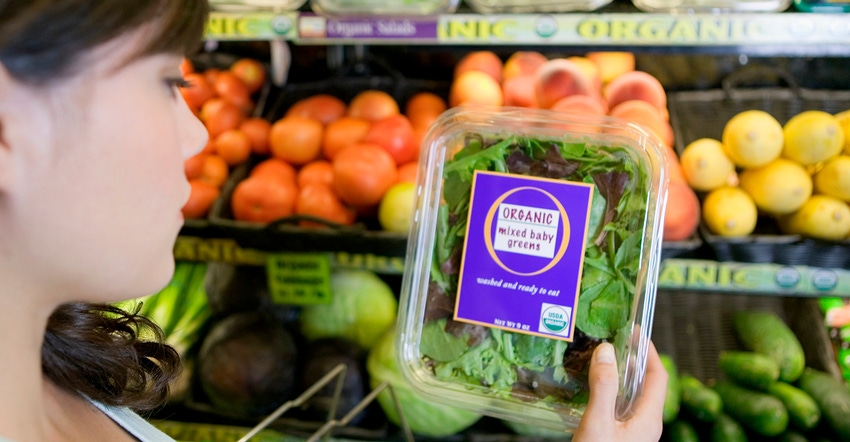Learn the basics behind the organic label
In this creative skit-style presentation, Gwendolyn Wyard of the Organic Trade Association (OTA) plays the role of a shopper new to organics with three organic experts—Jessica Walden, Logan Peterman and Mike Dill. Watch and discover a ton about the nuts and bolts of this critical industry segment.
April 6, 2018

“Organic requires that you have records that disclose all your activities and transactions. That’s basically it. Any savvy business would want to do that anyways … so really, what organic requires isn’t anything over the top. It’s actually just best practice.”
—Mike Dill, Food Safety and Compliance Manager, Organically Grown Company
Part 1: Introduction
Highlights:
Organic is the most transparent, the most consumer-driven and the most heavily regulated food system in the world.
Organic is unique among the ecolabels out there: It requires annual on-site inspection and third-party certification with government oversight (USDA).
Having verification behind the label builds trust for customers paying that organic premium.
-----
Part 2: The NOP, the NOSB, the National List
Highlights:
Any agricultural product with the term “organic” on the front panel must be certified under the National Organic Program (NOP)—it’s the law. Violators face steep fines and possible jail time.
The National Organic Standards Board (NOSB) is comprised of 15 volunteers from the organic community, and oversees the National List of allowable materials and ingredients.
The list of approved substances for organic is very small (25) compared to that of conventional operators (900-plus).
Certified organic means 95 percent or more of a product’s content must be organic, except when there’s no suitable organic alternative that exists.
There’s a no-growth trend for the National List: only six synthetics have been added since 2008, while 72 materials have been removed, denied or further restricted.
-----
Part 3: Organic vs. conventional, 606 List opportunity, inspections
Highlights:
Synthetic hormones and antibiotics are prohibited for organic certification. Be wary: The conventional producer that’s marketing the absence of these offers an unverified claim.
The organic standard protects animals, and also improves the health of the system and the end product.
The 606 List offers an opportunity for the supply side; it’s a rapidly growing market niche.
Inspections occur from farm to shelf equating to complete traceability.
The bright side of inspections: They validate and verify the hard work you put into creating and maintaining a written plan for your organic standards.
-----
Part 4: Deciphering labels, packaging requirements, certification challenges and costs
Highlights:
Currently the National Organic Program (NOP) is geared toward food production only. Certifier statements on labels can help to verify organic product.
“Made with organic” products contain 70 percent certified organic ingredients and up to 30 percent non-organic ingredients.
Organic is always non-GMO but non-GMO is not always organic, according to organic trade groups.
Helpful slides to decipher packaging label requirements for various organic claims.
Organic livestock certification takes roughly three years and costs $800-900; it’s an easier process and costs less for crop growers, handlers and processors.
-----
Part 5: Regulatory issues, having a say
Highlights:
The NOP rule was passed into law in 1990, and it would take an act of Congress to change it.
Organics is a very active community, and it would be difficult for any one entity to take over even as more players enter the game.
Stay informed and pay attention to issues that affect your business or supply chain.
Speak up! Regulators especially want to hear from growers and farmers.
-----
Part 6: Q&A
Highlights:
Supply chain traceability and block chain technology: The OTA is all over this one.
How organic standards apply to international products/sourcing: It’s a worldwide system.
Inspection report fallout and next steps: The focus is on continuous improvement.
Fortified foods and amino acid fortification issues.
The fourth label category that doesn’t require certification.
This session—Organic 101—was recorded at Natural Products Expo West 2018. Click "download" below to access the presentation slides.
About the Author(s)
You May Also Like


